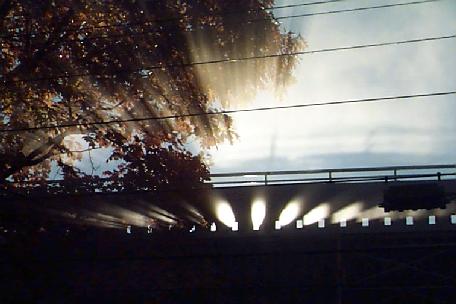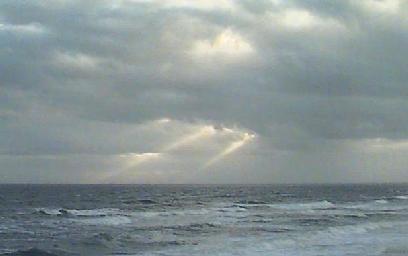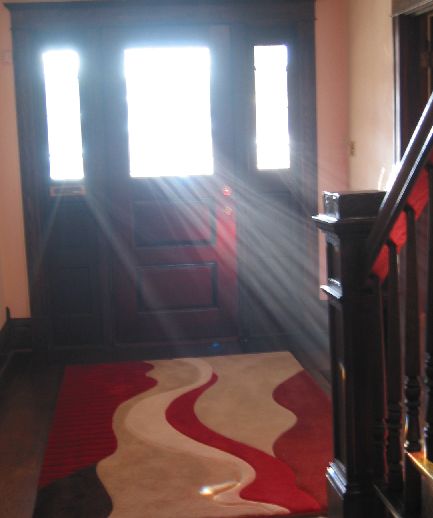
In the later units of this virtual workshop we will use light beams to analyze how mirros and lenses work. Light beams are interesting because they provide a clear demonstration that light travels in straight lines.
Applications
Lighthouses produce light beams that sweep the horizon. Ships at sea see the blink of light as a beam briefly shines towards them, and are thereby warned of the rocks.
Lasers produce very good light beams. This makes them useful as a light source when it is intended to to illuminate just one thing at a time. They are used for this purpose in a CD player, where the beam lights up one tiny pit at a time to read the information on the CD, and in supermarket scanners, where the beam is rapidly played over the bar code to read the pattern of lines and spaces. Laser light beams are also used in surveying and laser gunsights, because they are nice and straight.
Everyday examples

The sun is just out of sight, hidden behind the railing at
the top of this building. Some workmen on the roof have
raised a cloud of dust, which lets us see the light beams
streaming through the apertures below the top railing.
Although the beams appear to be diverging, they actually are
parallel (this is the same effect that causes the two sides
of a long straight road to appear to come together at the
horizon).
 In this picture, beams of
sunlight are breaking through holes in the clouds. The
interpretation is the same as in the previous picture, though
the explanation is more difficult because it is harder to
tell how far away is the hole in the clouds that forms the
beam.
In this picture, beams of
sunlight are breaking through holes in the clouds. The
interpretation is the same as in the previous picture, though
the explanation is more difficult because it is harder to
tell how far away is the hole in the clouds that forms the
beam.

Pancakes for breakfast made just enough
smoke to reveal the sunbeams coming through the patterned glass window.
The unit on light beams